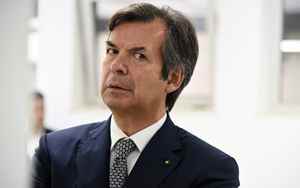(Finance) – “Our outlook is really conservative and more indications will be seen in the first quarter of 2023. In general, I don’t like the approach of giving a fantastic outlook with the sole purpose of increasing the share price in the short term“. He said so Charles Messinamanaging director of Intesa Sanpaoloto analysts who asked him for more information on the 2023 guidance, after the CEO had said he expected “a growth in net income well above the 5.5 billion euro net income for 2022, based on conservative assumptions”.
With the results of the first quarter, “we will analyze all the areas and more precise data on the real outlook and not just on the estimates for 2023 – he added – And in that moment we will also give more indications on the trajectory to 2025. We hope to have all the information coming from the ECB on the real economy and monetary policy, like this we will be in a position to give more details on the significant upside we expect“.
Messina also underlined that “at the level of remuneration of the shareholders we don’t have to compete with competitors“, underlining that “we have reached such a significant level that we believe that shareholders are satisfied”.
The bank will distribute 3 billion euros of cash dividends for 2022, equal to a payout ratio of 70%, with the second tranche of the buyback (1.7 billion euro) which will be launched in the next few days, bringing the total additional distribution to 3.4 billion euro.
In the fourth quarter of 2022, Intesa Sanpaolo reduced its risk-weighted assets (RWA) “strongly” by 28.9 billion euros to “significantly strengthen capital, contributing to value creation”, but now “no further reduction of RWA is necessaryMessina said. He said RWA cuts can be easily replaced without absorbing capital, which Intesa has already started to do, and that the asset quality picture is positive, with NPL stocks and new flows at low levels. historians.
